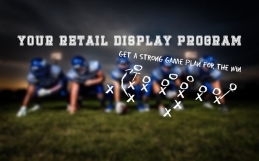
Too often, in day-to-day work tasks, people get stuck on autopilot. You see it at many checkout registers. As your products are scanned through, some cashiers hardly look at you. They hardly, if ever, smile to greet you. And if they do express the desire for you to have a nice day, it’s a script said way too often for it to be paid any attention. Great customer service is being given a second chance to come alive in the age of disruption. Are you paying attention? Because customers are more informed than ever about their options. A great customer experience will soon become standard. According to a recent Gartner survey, in 2016, “89% of companies expect to compete mostly on the basis of customer experience, versus 36% four years ago”.
Opportunities for good customer relations don’t just live at the public cash registers of the world or in the business-to-consumer leg of the journey. It lives in the emails to your suppliers and clients. It lives in your internal departments. It lives in business-to-business (B2B) settings. “Today’s B2B buyers…are increasingly looking for the convenience and intimacy they’ve come to expect from B2C, and they’re willing to reward sellers that provide it,” according to Forrester Consulting.
Below are tips that will provide great customer experiences through the length of the supply chain all the way down to the customer:
Great Customer Experience Tip #1: Take the details personally
People often talk about how successful businesses pay close attention to the details. For example, a high-end hotel ensures that every crease in your Egyptian cotton bedsheets is folded just right. At your bedside, they will provide a remote control for opening and closing your blinds. Plush robes and slippers are monogrammed with the hotel’s initials. Even the toilet roll ends are folded in ever so neatly. There is something to be said about forward-thinking. You are actively putting yourself in another person’s shoes to guess their needs. But now, we need to get personal.
According to an Accenture Personalization Survey, “consumers want (a) more personalized retail experience”. It’s a desire that is fueled by the “mobile mind shift”. Consumers can “get anything they want in their immediate context and moments of need”, as defined by Forrester. It’s common knowledge that retail websites use cookies and canvas fingerprinting to track particular web pages that you’ve visited. Ads suddenly appear on your Facebook page for those shoes you were recently eyeing elsewhere on the web.
Clients and customers need to feel like their minds are being read. Here are ways to stand out:
- Develop conversations with your customer or observe them to discover their likes and dislikes.
- Find the patterns of behavior of your suppliers to counteract any gaps in service and make good use of their strengths. This indirectly but positively effects the end user resulting in a great customer experience.
- In B2B settings, pay close attention to the content within your client’s emails which will help you to “predict” their specific needs.
These “predictions” are what make a customer feel like someone is listening to them. If you can make a customer feel heard, then chances are, you’re giving them a great customer experience.
Adam Siegel, VP of Sustainability & Retail Operations for Retail Industry Leaders Association and Jonathan Byrnes, Senior Lecturer at MIT’s Center for Transportation & Logistics, say that the advantages of finding out your customer’s specific needs, in-store and online, reach far into the reverse supply chain as well. Many retailers who are staying competitive with free returns and free shipping aren’t yet equipped to efficiently manage the overwhelming increase in return inventory. It’s effecting their bottom line. When you fully understand what your customer wants, you decrease the number of returns.
Great Customer Experience Tip #2: Be consistently consistent
Knowing your customer’s likes and dislikes is just the beginning. It’s important to organize this information, along with your general business processes. And all departments in your company should have access to it. Michael Gerber, author of E-myth Revisited states that your business model should provide “consistent value to your customers – it can’t be great one day and lousy the next…The system is what takes ordinary people and enables them to consistently do high quality work.”
Ways to systematize your business processes and client preferences include:
- Create an accessible database of client and supplier preferences
- Provide updated checklists that can be easily followed by your staff and suppliers
- Make it protocol to ask yourself who needs to know incoming information so that operations run smoothly and efficiently
- Write operation manuals for every single business process needed to run the company
- Be diligent about employee training and providing the right tools
Systematization is the embodiment of consistency. It allows you to measure how well your business is doing, helps you to develop a reputation and establishes a framework of accountability. Return customers don’t have to constantly be bothered with answering the same question every time. And it means that they won’t be disappointed on their next visit because your business didn’t live up to their expectations.
Great Customer Experience Tip #3: Let them fish
Nordstrom’s and Ritz-Carlton are businesses that always come to mind whenever the topic of exceptional customer service arises. Within Nordstrom’s Business Code of Conduct & Ethics, they ask that their employees “always use good judgment and treat customers in the manner that (they) would like to be treated.” Customer Service and Corporate Training Expert, James Lloyd, claims that his experience with Nordstrom changed his life by providing him with a pressed shirt 10 minutes before an important speech. (Click here for a recap of his great customer experience.) Both companies give their employees psychological ownership of the company by training them to be autonomous. This autonomy allows for the flexibility to meet their customer’s specific needs. Ritz-Carlton, the luxury hotel chain, offers a leadership program that teaches “the Ritz-Carlton method for fulfilling not only the expressed but also the unexpressed wishes and needs of your customers”.
How can you create a culture of autonomy in your company?
- Hire people you can trust
- Train thoroughly
- Provide them with whatever tools are necessary to help their customers
- Let them take ownership of the project from beginning to end
- Show your employees that you do trust them by empowering them to make their own decisions
- Allow a platform for open communication between management and staff
“The hallmark of a healthy culture is that people feel comfortable bringing up problems with and offering feedback to their leaders and vice versa,” says Carly Guthrie, HR for highly acclaimed NY restaurant, Per Se. If you feel that discomfort, then the trust is not there. Christian Reni of CustomerGauge says that the president of Ritz-Carlton, Horst Schulze, establishes his trust by giving “each staff member…$2,000 discretionary fund per guest, which (is) to be used to solve any customer complaint in a manner entirely decided upon by the employee…By allowing the employee the autonomy to make decisions for themselves and arm them with the capacity to meet customer needs, i.e. money, employees and customers view each other from the start in a far more amicable manner.” According to Data Freaks, both task identity, “the extent to which a job allows someone to be involved from the beginning to the end of a project”, and autonomy, encourages “higher employee engagement, lower turnover, and increased financial performance”. That in turn makes for a great customer experience and basically, everyone wins.
Great Customer Experience Tip #4: People Will Forget What You Did, But People Will Never Forget How You Made Them Feel
Maya Angelou’s words strike a chord. People hold on to emotions, and brands know this. Brands often tout the importance of storytelling in their marketing in order to tug at the hearts of their customers. But it’s important to connect emotionally at every stage with your customers, your staff and your suppliers.
How can your company create emotional connections?
- Allow your customers to review you and be sure to address any negative reviews promptly
- Create a Twitter account with a face, rather than a logo and have non-sales conversations with other Twitter users
- Treat employees like family and customers like friends
- Promote your client’s brands and products
- Separate the sales process from the brand exploration process
- Inject humor into the company culture
According to Peter McGraw, Director of the Humor Research Lab at the University of Colorado Boulder, “Humor makes experiences more enjoyable, smoothes social interaction and eases uncomfortable situations”. People are magnetized to brands and other people that use humor because they are the life of the party. They make life enjoyable. (Click here for a Twitter list of bold and brassy brands that use humor often.) People are magnetized to other people who use humor in the right way. The spotlight is taken off of them, and that helps put them at ease.
In addition to finding laughter and joy in brands, today’s consumers want a discovery process not tainted with the feeling of being sold to. By the time they’ve entered the store, they’ve already done their research regarding the products they’re interested in. Many companies are creating a staff of brand representatives totally separate from the sales staff. Apple Store’s Brand Geniuses are a great example of this. Even the store’s interactive layout revolves around providing a great customer experience.
This type of customer-centric culture has put franchisors like Dutch Bros Coffee on top of the annual Forbes list of best and worst franchises to purchase. Earlier this year, employees at their Vancouver franchise were seen holding a customer’s hand through their pick-up window. She had just lost her husband the night before. The tear-jerking scene made headlines after it went viral back in March 2016. But what most people don’t realize is that great customer experiences like these are an everyday part of the Dutch Bros culture.
Supportive experiences like this are also important to employees. Bob Chapman is the CEO of Barry-Wehmiller and author of the new book Everybody Matters: The Extraordinary Power of Caring for Your People Like Family. He touts a no-layoffs policy that got his company through financial hardships in the late 2000s. The company grew into an annual revenue of about $2.4 billion and was able to jump out of the recession quickly. He made it a requirement to keep experienced workers on board. They developed a no-layoffs reputation and his company has never had a problem filling positions. Employees who feel valued are more prone to creating a great customer experience.
In this day and age, the reputation of all companies are on the line due to online ratings or reviews. According to Moz, “online reviews impact 67.7% of respondents’ purchasing decisions”. And the dreaded negative review can now be seen as an opportunity to provide your customer with feelings of safety and security because how you deal with fixing the problem is what matters. According to MarketingCharts, customers who see brands respond to negative reviews “feel that the brand really cares about customers (41%), that it has great customer service (35%), and that it is trustworthy (22%). What’s more, shoppers who read brand responses to negative reviews showed significantly higher product sentiment and intent to purchase.” Today’s buyer appreciates an imperfect brand that is transparent and authentic.
Great Customer Experience Tip #5: Those Who Fail to Learn From History Are Doomed to Repeat It
Addressing negative reviews in a timely matter is so important. But it won’t make a difference if mistakes are repeated. Once those opportunities for improvement have been identified, they need to be analyzed and solutions need to be implemented.
What steps can be taken to ensure we learn from our experiences?
- Keep an open mind
- Create a company culture where employees feel safe enough to be honest about improvements that need to be made.
- Have post mortem meetings to find out what has and hasn’t been working
- Have premortem meetings to create failure scenarios and provide reasons for each failure.
- Write and update any new processes
- Communicate any changes to all parties involved and implement changes
Post mortem meetings are important because they allow those involved in a project to take a closer look regarding its successes and failures. Discussing successes helps the staff to figure out what they need to do more of. Discussing failures helps the staff to figure out what they need to do to improve.
On the other side of the coin, the thing that provides a good foundation for these steps is a safe space for employees so that they feel comfortable bringing up any needs for improvement in the first place. Gary Klein is a research scientist on decision-making and inventor of “prospective hindsight” or the “premortem”. He proposes that imagining the project failed and discussing the reasons for failure before executing the project is more effective than a port mortem. University researchers Mitchell, Russo and Pennington in one study, conclude that the ability to predict future outcomes increases by 30%. The reason premortems are more effective is because in the context of a hypothetical failure, no one is feeling the pressure of blame. It allows employees to feel more comfortable pointing out potential weaknesses without feeling like they are being disloyal. And participants in the premortem seem more motivated to play devil’s advocate and come up with ways in which the project can fail.
Recording any improvements or updates and making sure these updates get to the right people, helps keep everyone on the same page and increases chances for actual implementation resulting in a great customer experience in the long run.
A great customer experience is an important part of the customer-centric culture that is becoming the standard in retail today. Implementing these tips will provide a good starting point in creating that glue that will hold your business together while weathering the storms of the changing retail world.
Do You Need Point of Purchase Displays?
If you, or your company, are new to the world of Point of Purchase Displays, and you are looking to create a program for your company or product, let Concept Designs help. We have over 20 years experience designing, engineering, and managing the production of custom retail displays. We would love to hear from you.
Want to see more of our work? Click here.

